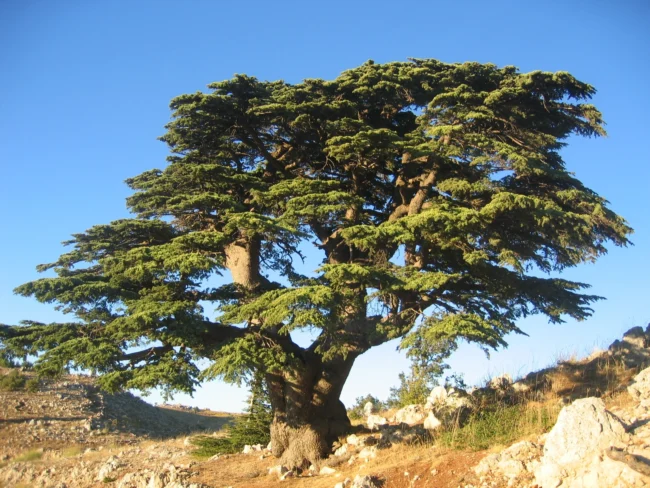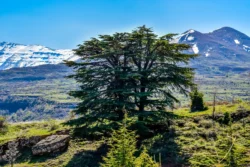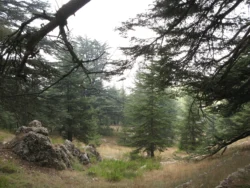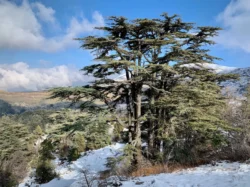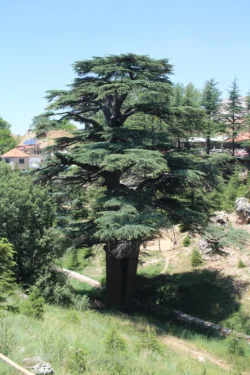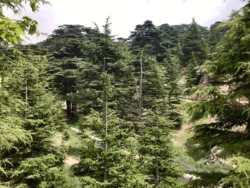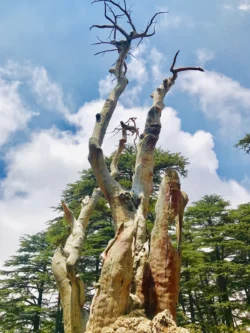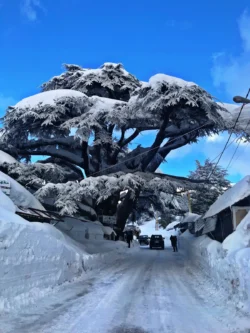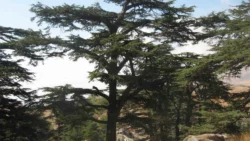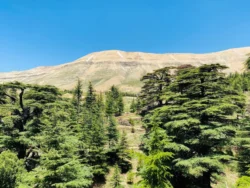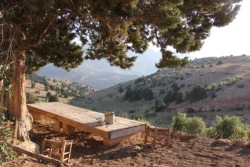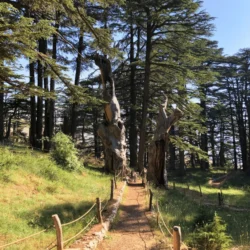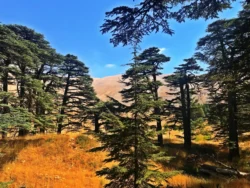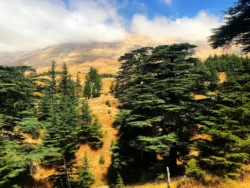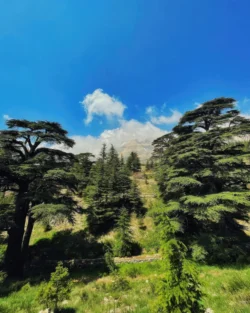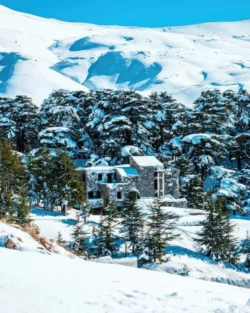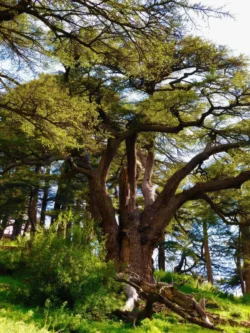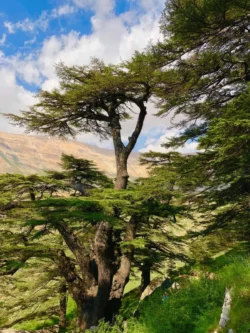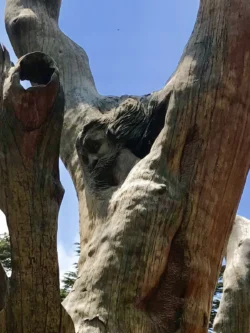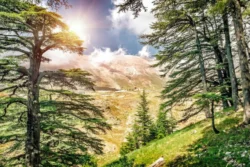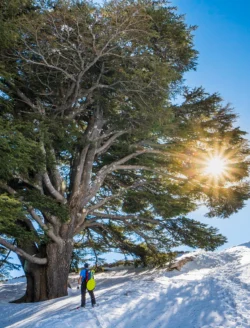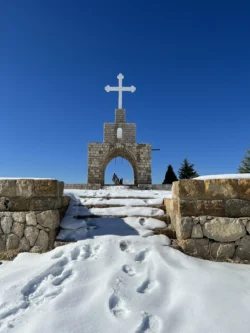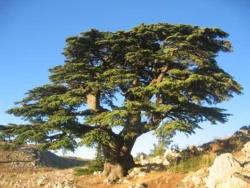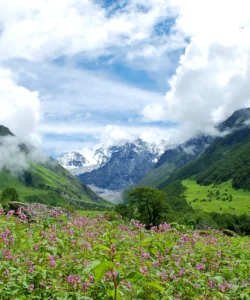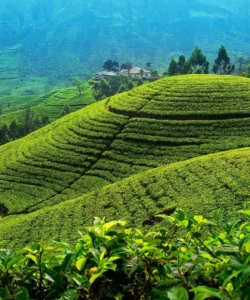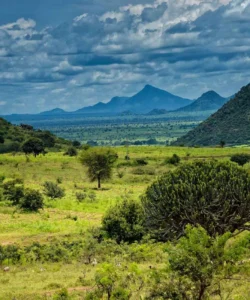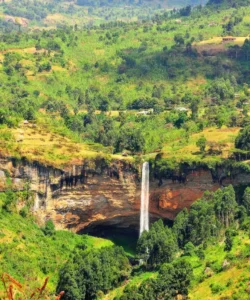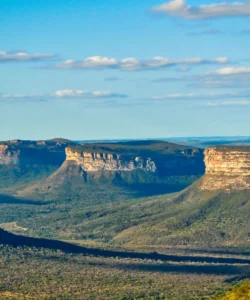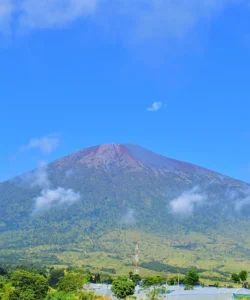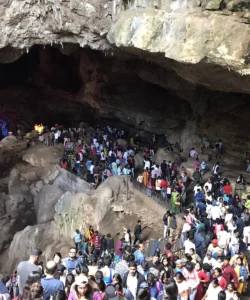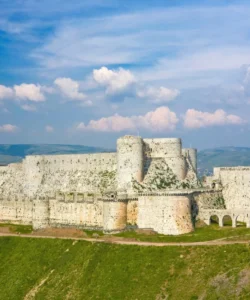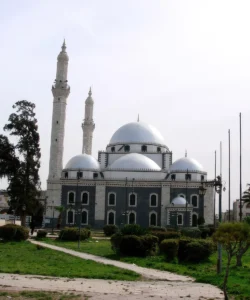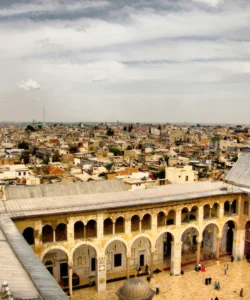The Cedars of God (Arabic: أرز الربّ, Arz ar-Rabb) is a revered forest located in the Kadisha Valley of northern Lebanon. It is a UNESCO World Heritage Site and one of the last remaining ancient groves of the Lebanon cedar (Cedrus libani) that once covered Mount Lebanon.
Listen to an introduction to Cedars of God
Name and Address
- Name: The Cedars of God, also known in Arabic as Arz ar-Rabb (“Cedars of the Lord”).
- Address: Located in the Kadisha Valley in the Bsharri District of the North Governorate, Lebanon. The grove is situated at the foot of Mount al-Makmal.
How to Get There
Getting to the Cedars of God typically involves a journey from Beirut.
- By Car/Taxi: The most common way to get there is by car or private taxi. The drive from Beirut is approximately 108 to 126 kilometers and can take between 2 to 2.5 hours, depending on the route and traffic. The main routes pass through towns like Chekka and Bsharri.
- By Public Transport: A more economical but less direct option is to take a bus from Beirut to Tripoli, and then find a minibus or service taxi to the town of Bsharri. From Bsharri, you would need to arrange a local taxi to the cedar grove itself.
- Organized Tours: Many companies offer guided tours that include transportation from Beirut, entry tickets, and a guide.
Landscape and Ecology
The forest is located in a stunning, mountainous environment.
- Landscape: The grove is situated at a high altitude of around 2,000 meters (6,500 feet), providing panoramic views of the Kadisha Valley and the surrounding peaks of the Mount Lebanon range. The ground is a mix of calcareous soil and rocky terrain.
- Flora and Fauna: The forest’s main feature is the majestic Lebanon cedar. Some of the oldest trees are estimated to be over 1,000 years old. In addition to the cedars, the area is home to other tree species such as junipers and maples, as well as various birds, mammals, and reptiles.
What Makes It Famous
The Cedars of God are famous for their profound historical, religious, and national significance.
- Biblical and Historical Importance: The wood of the Lebanon cedar was highly prized by ancient civilizations. It is prominently mentioned in the Bible, most notably for its use in the construction of King Solomon’s Temple in Jerusalem. Ancient Egyptians, Assyrians, and Babylonians also exploited the forests for timber for shipbuilding and palaces. The grove is referenced in the ancient Sumerian poem, the Epic of Gilgamesh.
- National Symbolism: The Lebanon cedar is the national emblem of Lebanon, symbolizing strength, longevity, and peace. It is a central feature of the Lebanese flag and coat of arms.
- Conservation: After centuries of deforestation, the remaining grove is now a protected reserve. A stone wall, built in 1876, helps protect the ancient trees and saplings from grazing animals and limits human access. It was designated a UNESCO World Heritage Site in 1998.
- Monumental Trees: The forest contains hundreds of trees, many of which are ancient and have massive trunks and branches. One of the most prominent trees is “The Cedar of God,” which is the oldest and largest in the grove, with a trunk circumference of 18 meters.
Differences from Some Other Wonders (e.g., Jeita Grotto)
While both the Cedars of God and the Jeita Grotto are natural wonders of Lebanon, they are fundamentally different in their nature and experience.
- Above Ground vs. Underground: The Cedars of God are an above-ground natural wonder, a living forest. The Jeita Grotto is a subterranean wonder, a complex of caves and an underground river.
- Historical Timeline: The significance of the Cedars of God is tied to their immense age and their role in ancient history and religion. The Jeita Grotto’s significance is more geological, with its formations dating back millions of years, and its modern discovery being a key part of its story.
- Experience: A visit to the Cedars is a tranquil experience of walking among ancient trees in a mountain landscape. A visit to the Jeita Grotto is an immersive, guided experience through a network of caves, often involving a boat ride and a cable car.
Cedars of God Photos:
